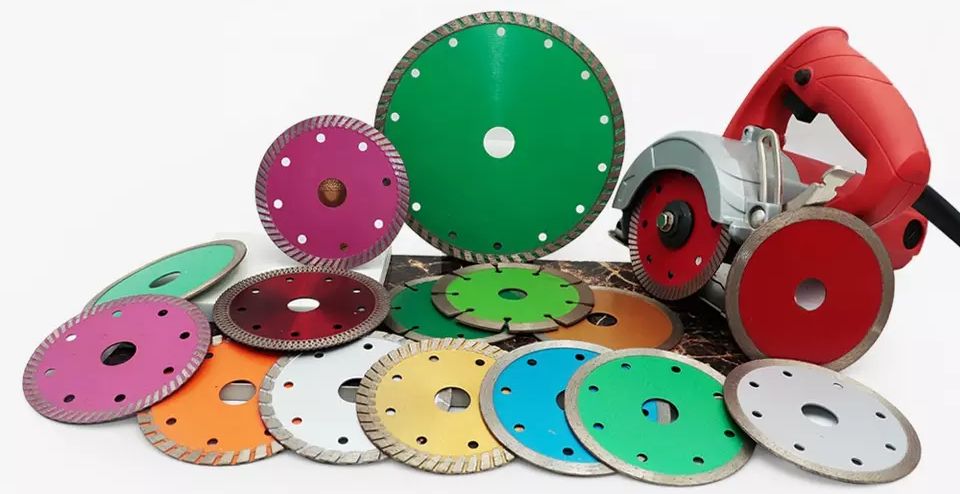
Service Hotline:
+86 15233213652
+998 932213533

+86 15233213652
+998 932213533
Force effect, temperature effect and wear: During the cutting process, the diamond saw blade will be affected by alternating loads such as centrifugal force, sawing force, sawing heat, etc., resulting in wear of the diamond saw blade.

Force effect: The saw blade should be subject to axial force and tangential force during the sawing process. Due to the forces of the saw blade in the circumferential and radial directions, the saw blade is wavy in the axial direction and disc-shaped in the radial direction. , these two deformations will lead to uneven rock cutting surfaces, stone waste, increased sawing noise and vibration, leading to early breakage of diamond agglomerates and reduced saw blade life.
Temperature effect: According to traditional theory, the influence of temperature on the saw blade processing process is mainly manifested in two aspects: one is the graphitization during the diamond agglomeration process, and the other is the thermal energy between the diamond and the matrix, which causes the diamond particles to fall off prematurely. New research shows that the heat generated during the cutting process is mainly introduced into the agglomeration process. The temperature in the arc zone is not high, generally between 40 and 12 0℃, but the temperature at the grinding point is higher, generally between 2 5 0 ℃ and 70 0 between ℃.
However, the coolant only reduces the average temperature of the arc zone and has little effect on the abrasive temperature. This temperature will not cause carbonization of graphite, but will change the frictional properties between the abrasive particles and the workpiece, causing thermal stress between the diamond and the additives. The fundamental bending that leads to diamond failure mechanisms, results indicate that temperature effects are the most important factor affecting saw blade damage.
Wear: Due to the influence of force and temperature, saw blades often wear after being used for a period of time. The main forms of wear are: abrasive wear, local crushing, large-area crushing, shedding, and mechanical scratches along the direction of sawing speed. Abrasive wear: Diamond particles and parts continue to rub, and the edges passively enter the plane, destroying the cutting performance and increasing friction.
The heat of sawing will produce a thin layer of graphitization on the surface of diamond particles, which will greatly reduce the hardness and intensify wear. At the same time, the surface of the diamond particles is subjected to alternating thermal stress, and at the same time it is subjected to alternating cutting stress, fatigue cracks and local cracks, and sharp new edges appear, which is an ideal form of wear. Large-area crushing: Diamond particles are subjected to impact loads during cutting, and protruding particles and grains are consumed prematurely.
Falling off: The alternating cutting force causes the diamond particles to continuously shake in the binder, causing looseness. At the same time, during the sawing process, the wear of the adhesive itself and the heat of sawing soften the adhesive. This reduces the durability of the bond. When the cutting force is greater than the holding force, the diamond particles will fall off. No matter what kind of wear is closely related to the load and temperature of the diamond particles. Both depend on the cutting process and cooling and lubrication conditions.

Scan Code